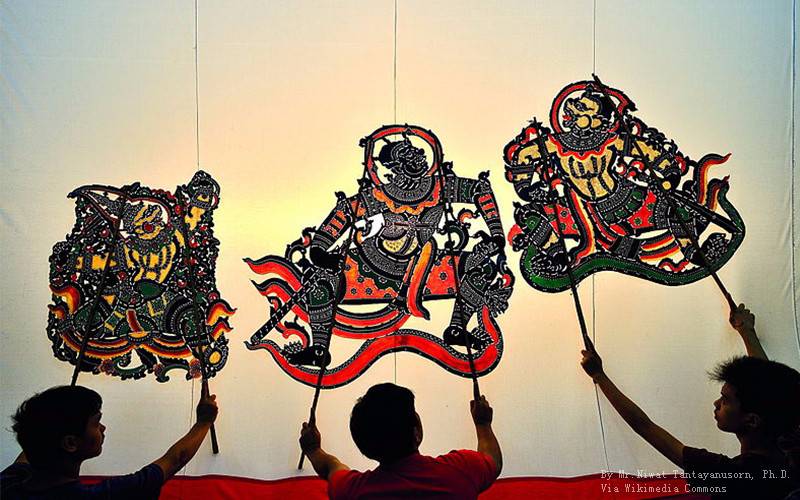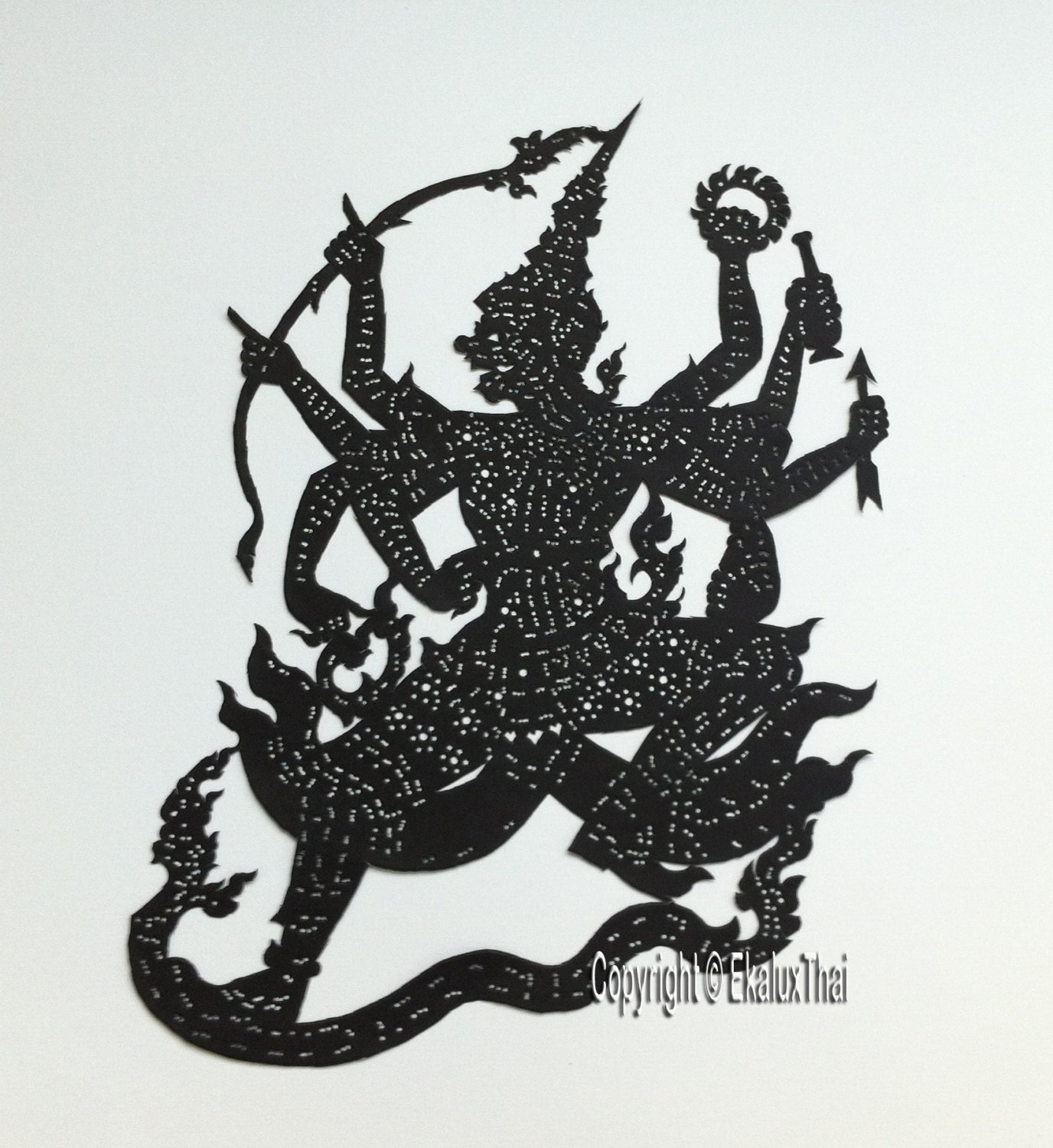

But there are a wide variety of shadow puppets from southern and southeastern Asia, some depicting individual characters and others whole scenes. Scenes of evil are central to some puppet dramas in China, as we can see with “Scene of Souls in Hell” (19th century), from Shaanxi, where three figures seem to be in the process of being cooked in boiling water, like shrimp. The shape of the profile, position of the head, and ornamentation of the headdress define the character’s personality. Most traditional shadow puppets depict characters in profile. Asian performances are accompanied by several instruments, including the gong, the flute, the ektari (a single-stringed lute), the pungil (a pipe type of instrument), cymbals, the dhole (double sided drum), the muck veonal (a type of oboe), and the harmonica. In Javanese culture it is thought that once a puppet has eyes, its life begins - a life animated by music, environmental sounds, or audio effects. Yet in general, audiences are very forgiving of puppets - they only need to give the impression of life, rather than being ultra-realistic, because the viewer completes the scene with her imagination. Traditional Asian shadow theater, including Thai (Nang Yai) and Malaysian (Wayang Sian), are characterized by extreme emotions, particularly angst and wretchedness.

Studying a work of puppetry as a work of art, like “Tree with Man-Shrimp” (1950) from Java, is an experience - the puppets are not just vehicles to comment on the world (often through theatrical and religious texts), but are visually attractive and powerful objects in themselves. Therefore, this art form demands a special kind of attention and partisanship.

#Thai shadow puppetry full#
There is a dual nature to Asian shadow theater, as the emotional content of the performance is very deliberately split between the puppets and the narrator (who stands beside the stage but in full view of the audience). Others seem ready to perform crude language and uninhibited sex acts, such as “Erotic Clowns” (1950) from Thailand. Some of the puppets at the Museu do Oriente in Lisbon depict sharply comical stories that mock authority. Puppets have been used to voice dissent, as they have the latitude to say things humans cannot and are a bit withdrawn from reality. Shadow plays are thought to be one of the most ancient forms of puppetry and it’s unclear where shadow puppetry originated. Epics of spiritual battlefields, such as the Ramayana, are told through this art form where the light source behind a white screen acts as a space for the imagination to wonder and wander. In India and Thailand, shadow theater must be considered within the context of temple festivities and as ceremonial fascination. The visible rods complicate and demystify the ghostliness of the puppets and bridge, as in “Giant of Battles” (1974) from Java, the gap between the subconscious/imaginary and the real/tangible. In the exhibition, these visible sticks create a distancing effect that can feel a bit awkward. Still, the gentle white light creates something of an invisible stage where the frozen figures, so full of potential, are imagined to talk, hover, swoop, and vibrate.Īsian shadow puppets are traditionally flat, cut-out figures that are attached to and controlled by sticks (or thin rods).

Here, resting immobile before translucent screens illuminated from behind, the puppets’ forms only suggest the shady limbos they inhabit when performed. When held and moved in front of a light source behind a white screen, the intricately cut puppets create shadows and various motion effects. Not to mention our own inner world made up of fleeting, half-real mental projections staged in the theater of our minds. As such, shadow theater might remind us of other (virtual) phantom presences in our culture. Its spellbinding, graceful interplay between light and shadow is riveting in its devoutly anti-realist and phantasmagoric aesthetic. Asian shadow theater is catnip for those with energetic imaginations.


 0 kommentar(er)
0 kommentar(er)
